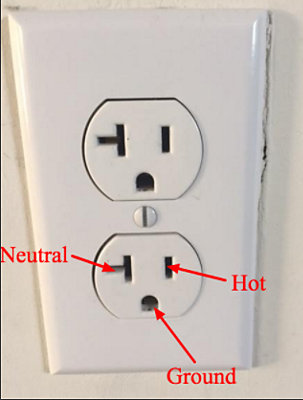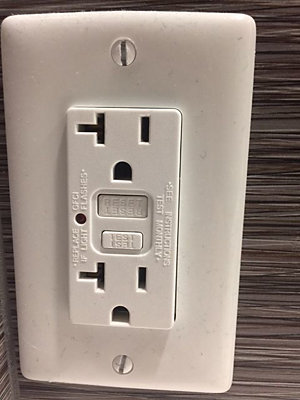Should I Change a Two-Prong Outlet to a Three-Prong?

Our professional answer? Yes. If you have an older home (one built before 1962) that has two-prong outlets, your safest option is to have those outlets rewired to a grounded three-prong outlet.
Why?
Because two-prong outlets are “ungrounded outlets”, meaning they don’t have an extra “ground” wire that protects you from possible surges of electricity. And without that extra protection, you’re at a higher risk of experiencing:
- Electric shock
- An electrical fire
- Damaged electronics
Let’s take a closer look at these two different types of outlets.
Need a professional to change a two-prong outlet to a three-prong? Just contact us and we’ll send over an electrician right away.
Two-prong vs three-prong outlet: What’s the difference?
The main difference between a two-prong outlet and a three-prong outlet is that a three-prong outlet has a ground wire, while a two-prong outlet doesn’t.
So, what exactly is a “ground wire”?
Well, a ground wire is basically a wire that acts as a shortcut and directs any surge of excess electricity to safely flow into the ground.
You see, every outlet has a hot and neutral wire. Your hot wire delivers electricity to the outlet while the neutral wire sends the electricity back to the main electrical panel. And both wires are designed to handle only a certain amount of volts (usually 120 volts).
But if those wires receive more electricity than they’re designed to handle (i.e. from plugging in too many appliances) they can deliver an electrical shock, heat up and cause a fire or damage the plugged in appliances.

But when there’s a ground wire present, the extra electricity travels along this wire and is simply absorbed into the earth instead.
Two options for upgrading a two-prong outlet
If your home has multiple two-prong outlets, 2 upgrade options include:
- Adding a ground wire to upgrade to a 3-prong outlet. This is the safest option and requires running a ground wire from the main electrical panel to the specific outlet. Adding a ground wire must be done by a professional, and each two-prong outlet needs to be updated separately.
- Adding a Ground Fault Circuit Interrupter (GFCI). This is an alternative option to adding in a ground wire. Although the circuit will still be “ungrounded”, the GFCI will monitor the flow of electricity traveling through the outlet and cut power to the outlet if the voltage ever gets too high.

A Ground Fault Circuit Interrupter (GFCI) outlet
Need a two-prong outlet updated? Ask a Florida electrician
Have an older home in Florida and need to update your two-prong outlet? Just contact us. We have licensed electricians in Orlando, Sarasota, Tampa, and Naples and serve the surrounding areas.
Posted in: Tips